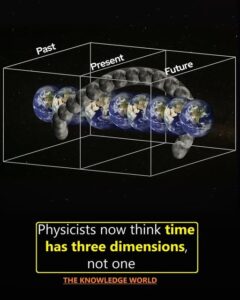
Instead of one timeline moving only forward, Kletetschka proposes three separate axes of time—like height, width, and depth in space—allowing for different versions of events and new paths between them. He describes this setup as the “canvas” on which reality is painted, with space being the paint. His model combines these time dimensions with space to create six total dimensions, offering a possible step toward the long-sought “theory of everything.” Unlike earlier 3D time ideas that were mostly abstract math, Kletetschka says his version makes real-world predictions, including matching the known masses of particles like electrons and quarks. The theory also keeps cause and effect intact, avoiding the confusion earlier models had. Supporters believe this kind of framework might help unify quantum mechanics and gravity, which currently don’t work well together in physics. Still, the idea hasn’t been widely accepted. It’s published in a lesser-known journal, hasn’t been independently verified, and lacks support from the broader scientific community. Without peer-reviewed replication or acceptance in major journals, it remains speculative.

https://www.facebook.com/groups/775801081313358/posts/1101582055401924/
